Renting a dumpster can be an essential part of any home renovation, construction project, or major clean-up, helping you easily manage all the debris and junk that accumulates. Whether you’re decluttering your home, managing waste during a large event, or overseeing a landscaping overhaul, having the right dumpster and knowing how to maximize its use is key to saving time, money, and effort.
In this blog post, we’ll explore 10 smart tips to help you get the most out of your dumpster rental. These strategies will help you make sure your rental period is smooth, efficient, and cost-effective, no matter the size or scope of your project.
1. Choose the Right Dumpster Size for Your Project
Selecting the right dumpster size is crucial. A dumpster that’s too small will require additional pickups or an extended rental, both of which increase your costs. On the other hand, a dumpster that’s too large means you might pay for more capacity than you need.
Here’s a quick guide to selecting the best size for your needs:
- 10-yard dumpster: Ideal for small projects like cleaning out a garage or attic.
- 20-yard dumpster: Best for medium-sized projects such as a kitchen remodel or decluttering.
- 30-yard dumpster: Suitable for larger home renovations or multi-room cleanouts.
- 40-yard dumpster: Perfect for major construction projects or large-scale demolitions.
When in doubt, it’s a good idea to discuss your project details with the rental company, as they can help you choose the right size based on the type and volume of materials you’re disposing of.
2. Plan Your Rental Period Wisely
Timing is everything when it comes to dumpster rentals. Most companies rent dumpsters on a weekly basis, but extending your rental period or requiring additional pickups can increase costs. To avoid this, have a clear understanding of your project’s timeline and try to estimate the duration as accurately as possible. It’s always a good idea to pad your estimate with a couple of extra days, just in case your project takes longer than expected.
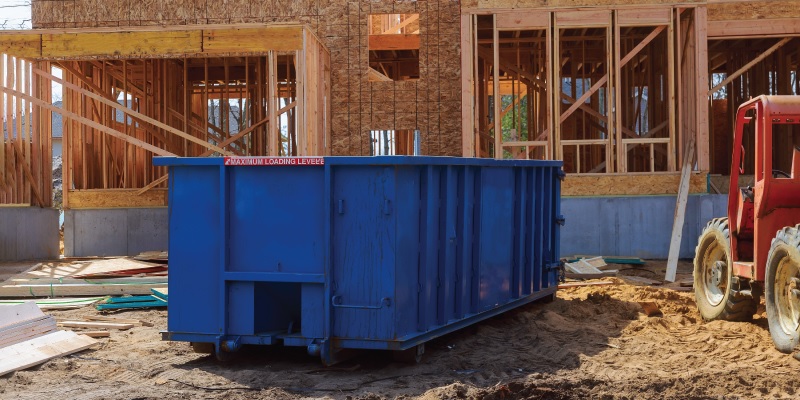
3. Understand What You Can and Can’t Throw Away
Not all items can go into a dumpster. Knowing the rules ahead of time can save you from unexpected fines or having to find alternative disposal methods for certain materials.
Most rental companies prohibit the following from being placed in dumpsters:
- Hazardous materials: Paint, chemicals, asbestos, batteries, and certain appliances containing hazardous elements (like refrigerators with Freon).
- Electronics: Some companies won’t allow TVs, computers, or other electronics, as they require special disposal.
- Tires: Because tires can’t be compacted, they are often restricted.
Be sure to ask your rental provider for a full list of prohibited items and prepare alternative disposal methods for any restricted materials.
4. Don’t Overload the Dumpster
Each dumpster has a weight limit, and exceeding it can result in additional fees. Overloading a dumpster can also make it unsafe for transport. Most dumpsters have a clearly marked fill line, so it’s important not to go beyond that line when loading. Not only could you be fined for overloading, but an overloaded dumpster could create issues with transportation or even delay your project.
5. Break Down Larger Items
Maximizing the space inside your dumpster is key to getting your money’s worth. To do this, make sure to break down larger items like furniture, boxes, or cabinets. Disassemble items like bed frames, shelving units, and large appliances whenever possible to minimize the space they take up.
By doing this, you can fit more into the dumpster and avoid needing extra pickups or rentals.
6. Load the Dumpster Strategically
In addition to breaking down large items, it’s important to think about how you load your dumpster. Start by placing the heaviest and largest items at the bottom, and then layer smaller, lighter items on top. This method ensures that you are using the full capacity of the dumpster and prevents lighter debris from spilling over the top.
For example, when cleaning out a garage or shed, place heavy items like old appliances and furniture at the bottom, then fill in gaps with smaller materials like boxes, bags of trash, or yard debris.
7. Recycle and Donate When Possible
Not everything needs to be thrown into a dumpster. In fact, you can help reduce waste and maximize your space by recycling or donating items that are still usable. Many household items, such as old electronics, metal, or furniture, can be recycled or donated to local charities. This can help you reduce the amount of debris you throw away, freeing up space in the dumpster for other materials.
Some dumpster rental companies even offer separate containers for recyclables, so check with your provider about environmentally friendly disposal options.
8. Check If You Need a Permit
If you’re placing the dumpster on public property (such as a street or sidewalk), many municipalities require a permit. Make sure to check with your local authorities before the dumpster arrives. Some rental companies will help you secure a permit, while others may leave it to you to handle. Either way, it’s best to handle this in advance to avoid fines or delays.
9. Keep the Dumpster Accessible
When planning your dumpster placement, make sure it’s in an easily accessible location. Consider the proximity to the work area, and avoid placing the dumpster too far from where you’ll be working. This can help reduce the amount of time spent walking back and forth and make your cleanup process faster and more efficient.
Additionally, be sure to place the dumpster in a spot where the delivery truck can drop it off and pick it up without obstructions. If you’re working in an area with limited space, consider coordinating with the rental company to find the best solution.
10. Schedule Pickup When Your Project Is Complete
Once you’ve filled your dumpster and your project is complete, be sure to schedule the pickup promptly. Many companies will charge extra fees if the dumpster is left on-site longer than the agreed-upon rental period. To avoid these charges, contact your rental company and schedule the pickup in advance.
If you’re unsure of your timeline, you can typically extend your rental period, but make sure to communicate any delays with your provider so you avoid unnecessary fees.
Bonus Tip: Get Multiple Quotes
Before you commit to a dumpster rental, it’s always a good idea to shop around and get quotes from multiple providers. Prices can vary depending on the company, location, and dumpster size, so comparing a few options can help you find the best deal for your project.
Look for companies that offer transparent pricing with no hidden fees and good customer reviews. Inquire about their policies on weight limits, overage fees, and rental period extensions, so you have a clear understanding of the total cost upfront.
Conclusion: Make the Most of Your Dumpster Rental
Renting a dumpster can make managing waste from large projects much easier and more convenient, but it’s important to use the right strategies to get the most out of your rental. By following these tips—choosing the right size, breaking down large items, recycling when possible, and keeping an eye on weight limits—you can save money and avoid unnecessary stress during your project.
Whether you’re tackling a home renovation, managing a construction site, or decluttering your space, a well-planned dumpster rental can streamline your waste management and keep your project on track.
For more helpful tips on home improvement, landscaping, and project management, be sure to check out our blog regularly at BalkanHotel.net! We’re here to provide you with expert advice and insights on how to make your projects easier and more efficient, no matter the size or scope.
You said:
ChatGPT said:
Certainly! Here’s an expanded version of each tip to provide even more detailed advice for making the most out of your dumpster rental:
1. Choose the Right Dumpster Size for Your Project
Selecting the correct dumpster size is perhaps the most crucial decision in the rental process. If you choose a dumpster that’s too small, you’ll run the risk of needing additional pickups or a second rental. This can quickly drive up costs and interrupt your project timeline. Conversely, a dumpster that’s too large may leave you paying for space you don’t use. Each size is designed for different types of projects, so understanding the volume of debris you’re dealing with is key to making an informed decision.
For example, if you’re cleaning out a small attic or decluttering a single room, a 10-yard dumpster (which holds about 3 truckloads of debris) will likely suffice. On the other hand, a kitchen remodel that involves tearing down cabinets, countertops, and flooring may require a 20-yard dumpster (roughly 5 truckloads).
For major projects, such as home renovations, demolitions, or new construction, consider a 30- or 40-yard dumpster. These are designed to handle significant amounts of waste, including heavy materials like concrete, roofing shingles, or large pieces of wood.
It’s always a good idea to consult your dumpster rental company with details about your project. They’ll have experience in determining the best size based on the type and volume of materials you’re dealing with, ensuring that your rental meets your needs without excess.
2. Plan Your Rental Period Wisely
Time management is a vital part of keeping costs down during a dumpster rental. Most companies rent dumpsters by the week, but many will allow you to extend the rental for an additional fee. Planning ahead and estimating how long your project will take ensures that you won’t pay for more days than you need.
If you’re working on a smaller project, such as a weekend decluttering session, a rental period of three to seven days should suffice. However, for large-scale projects, such as home renovations or construction work, consider how long each phase of the project will take. It’s often better to overestimate the time required to avoid having to extend your rental period last-minute.
Also, factor in cleanup time. Even if you complete your renovation or construction on time, cleaning up the debris and filling the dumpster often takes longer than anticipated. Allocating a few extra days for cleanup will prevent the need for rushed decisions and avoid the hassle of incurring late fees.
3. Understand What You Can and Can’t Throw Away
One of the biggest mistakes people make when renting a dumpster is assuming that everything can be thrown in. Most dumpster rental companies have strict guidelines about what materials are acceptable for disposal. Throwing prohibited items into your dumpster can lead to fines, additional fees, or even refusal of service. Understanding these restrictions before you start your project can help you avoid headaches down the road.
Commonly restricted items include:
- Hazardous materials: These include chemicals, pesticides, batteries, oils, paint, and solvents. Many of these items require specialized disposal due to environmental regulations.
- Electronics: TVs, computers, and other electronic devices often contain hazardous materials and need to be recycled or disposed of through e-waste programs.
- Tires: Due to the difficulty of compacting tires, many landfills won’t accept them. Ask your rental company about local disposal options.
- Appliances with Freon: Refrigerators, freezers, and air conditioners often contain Freon, which requires special handling due to environmental concerns.
If you’re unsure whether an item is allowed, check with the rental company in advance. They can provide you with a full list of acceptable and restricted materials, and might even help you find alternative disposal methods for prohibited items, such as recycling services or specialized disposal programs.
4. Don’t Overload the Dumpster
While it might seem tempting to pile as much debris as possible into your dumpster to get your money’s worth, exceeding the weight or fill limit can lead to serious problems. Most dumpsters have a clearly marked fill line, which indicates the maximum capacity for safe transport. Overfilling can make the dumpster unsafe to haul, potentially leading to additional fees, delays, or even the requirement to offload some materials before it can be moved.
In addition to volume, pay attention to the weight limit of your rental. Each dumpster has a specified weight capacity based on its size. Construction debris, concrete, and other heavy materials can quickly add up, potentially exceeding the weight allowance even if the dumpster isn’t physically full. This could result in extra charges, as many companies will assess overage fees for exceeding weight limits.
When in doubt, ask your rental provider about the weight limits and strategies for distributing heavy materials evenly in the dumpster to avoid surpassing the limit.
5. Break Down Larger Items
Space efficiency is crucial when using a dumpster. To maximize the available space, take the time to break down large or bulky items before tossing them in. For example, instead of throwing in a whole couch or piece of furniture, disassemble it into smaller parts. This helps ensure that you’re not wasting valuable space on large, awkwardly shaped items.
Cardboard boxes should be flattened, and wood or metal items can often be cut down to size to fit more neatly. Breaking down items allows you to make the most of every cubic yard of your dumpster’s capacity, ultimately saving you money by preventing the need for extra pickups or a larger dumpster.
For example, if you’re clearing out a room full of old furniture, taking the extra time to disassemble bed frames, bookshelves, or tables will free up more space for other debris like smaller household items, bags of trash, or construction materials.
6. Load the Dumpster Strategically
Properly loading your dumpster can make a huge difference in how much you can fit and how efficiently you use the space. Start by placing the heaviest and bulkiest items on the bottom. These items, such as broken furniture or old appliances, create a stable base and help prevent lighter items from being crushed or blowing away.
After the heavier items are in place, fill in gaps with smaller debris. For example, small bags of trash or loose materials like dirt or drywall scraps can be placed between larger items. This strategy not only helps you make the most of the available space but also ensures a safer load when the dumpster is being transported.
Keep in mind that some items, such as large pieces of wood or metal, can often fit better if they’re placed vertically rather than horizontally, allowing you to pack more efficiently. By strategically layering your materials, you can significantly increase the amount of debris your dumpster can handle.
7. Recycle and Donate When Possible
Before tossing everything into the dumpster, consider what can be recycled or donated. Many items that are no longer useful to you may still have value to someone else. If you’re clearing out a home, items like old furniture, clothing, electronics, and even kitchenware can often be donated to local charities or organizations.
Similarly, certain materials can be recycled instead of being thrown away. Metal, glass, wood, and certain types of plastic can be diverted from the landfill by being taken to a recycling facility. By separating recyclable materials from regular waste, you’ll reduce the amount of debris that goes into your dumpster, potentially saving space and reducing your environmental impact.
Some dumpster rental companies even offer separate containers for recyclables, so ask your provider if they have options for handling recyclable or donatable items.
8. Check If You Need a Permit
If you’re placing the dumpster on private property, like your driveway, you likely won’t need a permit. However, if you plan to place the dumpster on a public street, sidewalk, or other public property, most municipalities require a permit. This is to ensure that the dumpster doesn’t block traffic or create a safety hazard.
Permit requirements and costs vary by location, so be sure to check with your local government or municipality before renting. Some dumpster rental companies will assist you in obtaining the necessary permits, but it’s always best to confirm the process beforehand to avoid delays or fines.
9. Keep the Dumpster Accessible
When planning where to place your dumpster, think carefully about accessibility. Position the dumpster as close as possible to the area where you’ll be working, such as near the entrance of your home or next to the construction site. This minimizes the distance you’ll need to carry heavy or bulky materials, saving you time and effort.
Additionally, make sure the area around the dumpster is clear of obstacles like parked cars, fences, or landscaping. The dumpster delivery truck will need ample space to drop off and pick up the container. If the dumpster is placed in a tight or inaccessible spot, it could lead to delays or additional charges for repositioning.
Before the dumpster arrives, inspect the site and ensure there’s enough room for easy access. This can help streamline the entire process and prevent potential issues during delivery or pickup.
10. Schedule Pickup When Your Project Is Complete
Once your project is finished and your dumpster is full, don’t forget to schedule a prompt pickup with the rental company. Many companies will charge extra fees if the dumpster is left on-site longer than the agreed-upon rental period. It’s a good idea to book the pickup date in advance, especially if your project has a defined end date, such as after an event or scheduled renovation.
If your project timeline changes, be sure to communicate this with the rental company as soon as possible. Most providers are flexible about extending the rental period for an additional fee, but waiting until the last minute could result in penalties or delays in pickup.
Bonus Tip: Get Multiple Quotes
To ensure you’re getting the best deal on your dumpster rental, it’s always a good idea to shop around and get quotes from multiple providers. Pricing can vary based on several factors, including location, dumpster size, and rental period. Comparing quotes from at least three different companies will give you a clearer picture of the overall market and help you choose the best provider for your project.
In addition to the base rental price, ask about any potential extra fees, such as overage fees for exceeding weight limits, charges for prohibited materials, or additional fees for extending your rental period. By comparing not just the initial cost but also the fine print, you’ll avoid unexpected costs and get the best value for your money.
Conclusion: Maximize the Value of Your Dumpster Rental
A dumpster rental is an invaluable tool for managing large amounts of waste, but how you use it can greatly affect the overall efficiency and cost. By choosing the right size, planning your rental period wisely, and following best practices for loading and disposing of materials, you can ensure that your project runs smoothly and cost-effectively.
Taking time to break down items, recycle when possible, and keep your dumpster accessible will help you get the most value out of your rental, making your cleanup process faster and easier. Following these tips can help you avoid common pitfalls and make your project stress-free.
For more advice on home improvement, project management, and effective waste disposal, visit BalkanHotel.net and stay tuned for more expert tips and insights!
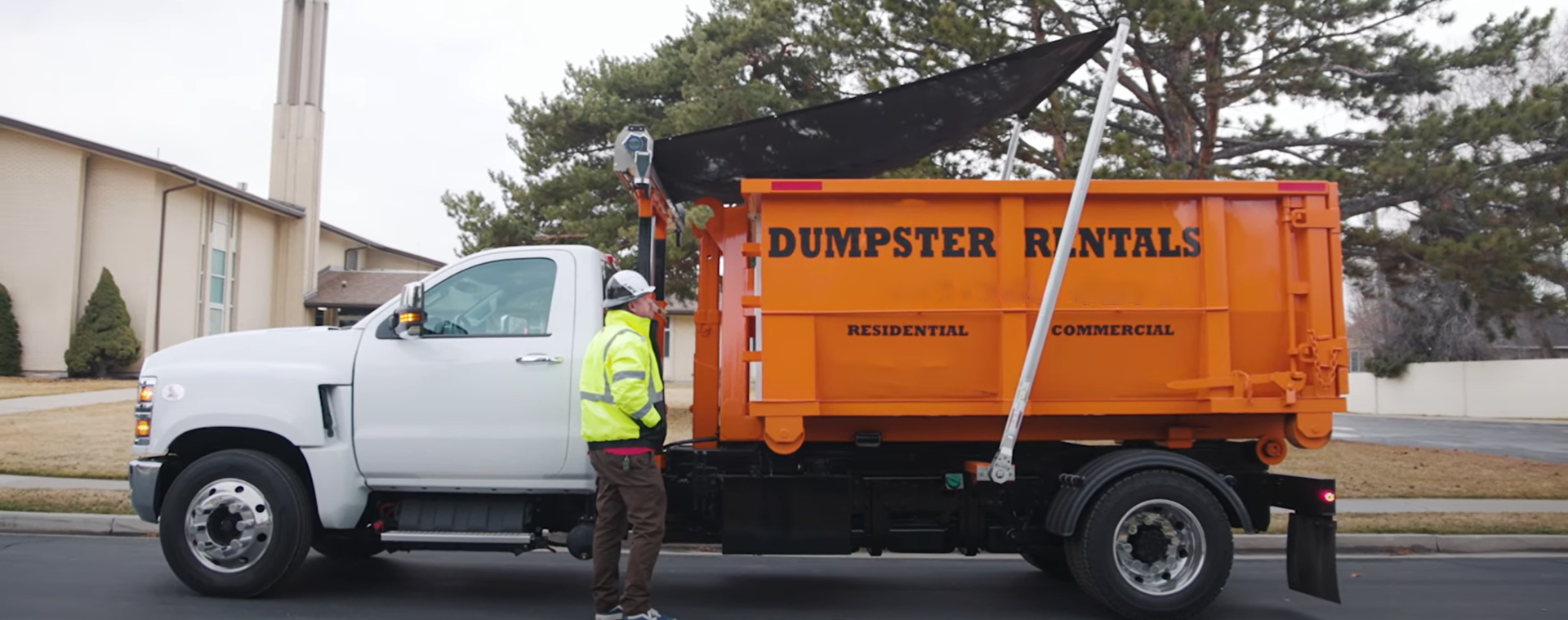
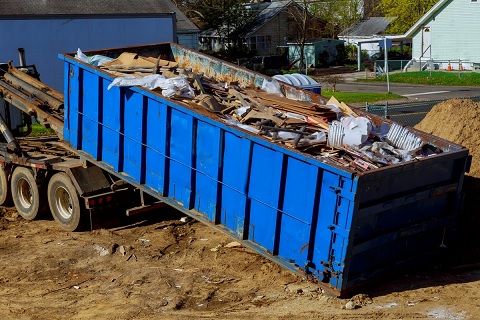 Whether you’re embarking on a home renovation, clearing out your property, or managing a major landscaping project, handling the waste that comes with these tasks can be overwhelming. Standard curbside trash collection often isn’t enough to accommodate the debris and junk you’ll accumulate. That’s where dumpster rentals come into play. Renting a dumpster simplifies waste management, ensuring your project stays organized and your property remains clutter-free.
Whether you’re embarking on a home renovation, clearing out your property, or managing a major landscaping project, handling the waste that comes with these tasks can be overwhelming. Standard curbside trash collection often isn’t enough to accommodate the debris and junk you’ll accumulate. That’s where dumpster rentals come into play. Renting a dumpster simplifies waste management, ensuring your project stays organized and your property remains clutter-free.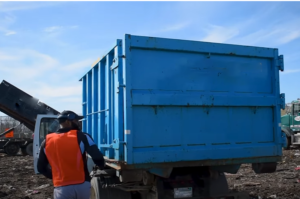 3. Consider the Rental Duration
3. Consider the Rental Duration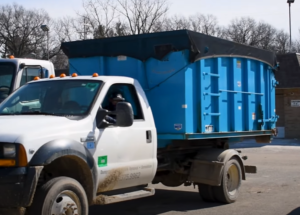 Finding the best dumpster rental service for your project requires doing your research. Ask yourself: how much should it cost? How big should a trash container be? Where will it be delivered? Will the company charge extra for shipping? These questions will help you choose the best company for your project. For the best dumpster rental service, visit https://www.dumpsterrentalslafayette.com/. The next step is to list all your options and compare prices. Make sure you are paying your budget appropriately.
Finding the best dumpster rental service for your project requires doing your research. Ask yourself: how much should it cost? How big should a trash container be? Where will it be delivered? Will the company charge extra for shipping? These questions will help you choose the best company for your project. For the best dumpster rental service, visit https://www.dumpsterrentalslafayette.com/. The next step is to list all your options and compare prices. Make sure you are paying your budget appropriately.